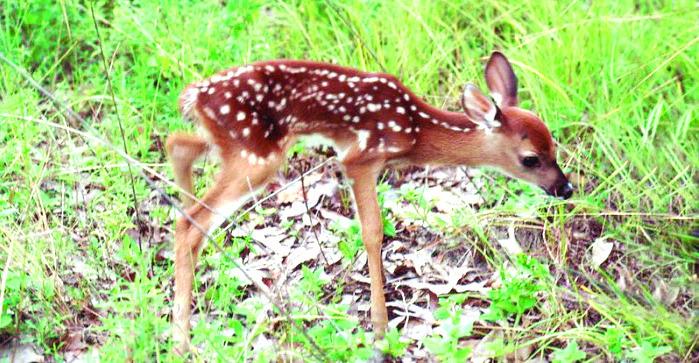Spring officially started March 19, but those dates are kind of nebulous in Florida—it can be both cold (relatively) and hot (90 in March? That’s hot!). With many wildlife species becoming more active this time of year, the Florida Fish and Wildlife Conservation Commission (FWC) is sharing ways that residents and visitors can help conserve our native species while also preventing potential conflicts.
Several species of wildlife become more active in the springtime for important needs such as migration, breeding, feeding and nesting. This increased natural activity often results in people being more likely to encounter our wildlife while enjoying the outdoors. To avoid disrupting important natural behavior and to prevent conflicts with native species, FWC asks residents follow some simple tips will help conserve our state’s wildlife during spring and beyond:
Injured and Orphaned Wildlife— Generally, if you find a young animal, such as a fawn or fledgling, it is best to leave it alone. Young animals are rarely orphaned; a parent may be nearby searching for food. You can report common wildlife you think could be injured or orphaned to a licensed wildlife rehabilitator. For further guidance, you can contact the nearest FWC Regional Office.
Nesting Waterbirds— Shorebirds, sea birds and wading birds start nesting this time of year and you can help by keeping your distance while on the beach or on the water. If birds become agitated or leave their nests, you are too close. When on the beach, keep an eye out for and avoid shorebird eggs and chicks, which are wellcamouflaged in shallow nests in the sand and shells. Wading birds, such as herons and egrets, and pelicans also are nesting now on mangroves and tree islands.
Sea Turtles— If you find yourself at the beach in early and late hours, you can help these large marine turtles, which start nesting on Florida beaches in spring, by keeping beaches dark at night and free of obstacles during nesting season. Artificial lighting can disturb nesting sea turtles and disorient hatchlings, so avoid using flashlights or cellphones on the beach at night. Turn out lights or close curtains and shades in buildings along the beach after dark to ensure nesting turtles aren’t disturbed. Clear away beach gear at the end of the day and fill in holes dug in the sand that could entrap turtles.
Bears— As spring temperatures warm, bears become more active. During this time of year, females are teaching their cubs what to eat and the skills necessary to survive. To help prevent conflicts and make sure that eating garbage, pet food or bird seed in your yard is not part of that learning experience, remove or secure attractants around your property. If bears can’t find food sources in your yard or neighborhood, they will move on.
Gopher Tortoises— Florida’s only native tortoise becomes more active this time of year, foraging for food and searching for a mate. If you see gopher tortoises or their half-moon shaped burrow entrances, it is best to leave them alone. Spotted a gopher tortoise crossing a road? If it is safe to do so, you may move it out of the road in the direction it was heading (but don’t put the tortoise in your vehicle). Remember the tortoise is a land animal that can’t swim, so never attempt to put it into water.
Snakes— Keep an eye out for our native snakes in your yard or when hiking, as they could be encountered more as the weather warms. What should you do if you come upon a native snake? Just give it space, as snakes usually try to avoid encounters.
Wildlife and Roads— With increased wildlife activity, keep an eye out for animals crossing roadways, including larger species.



